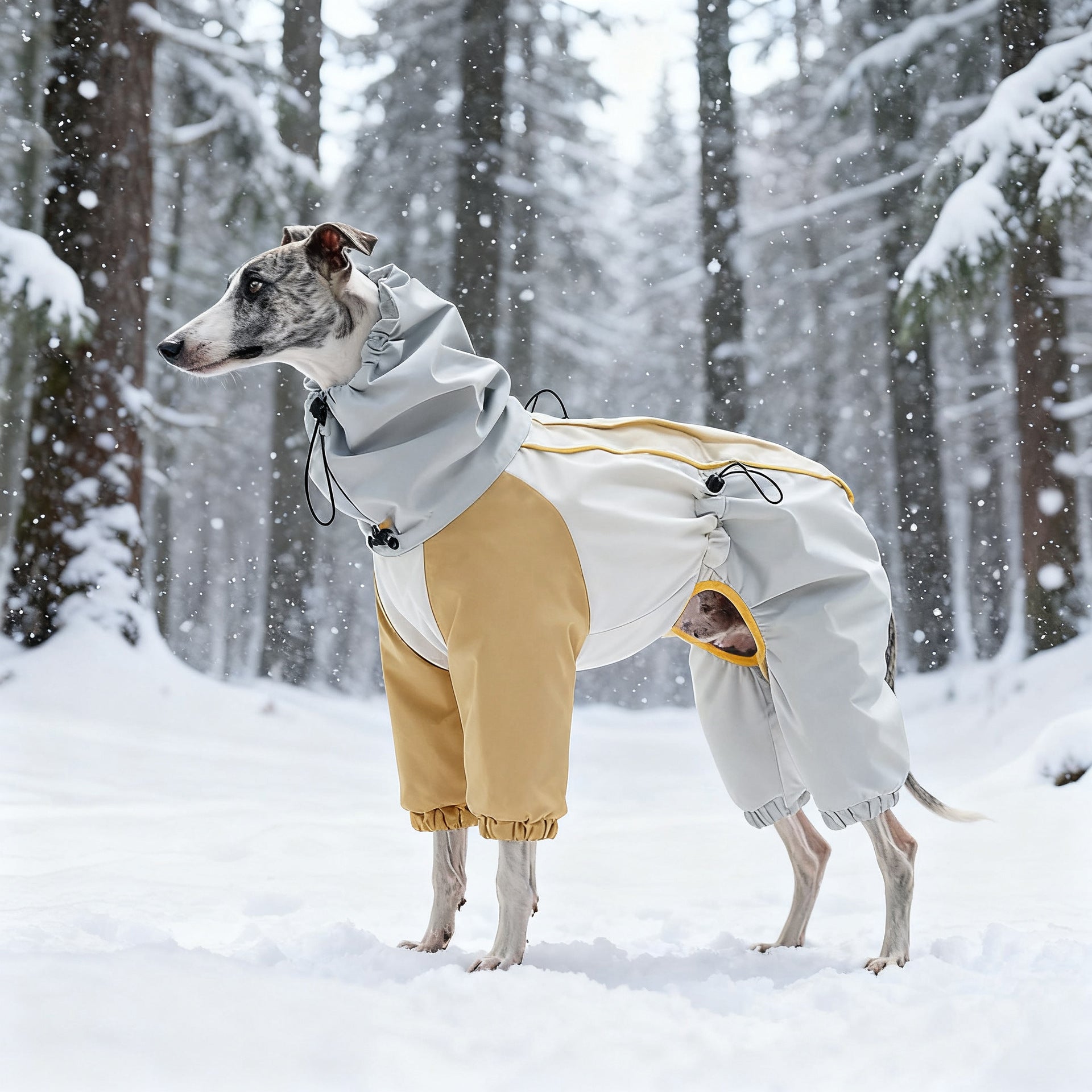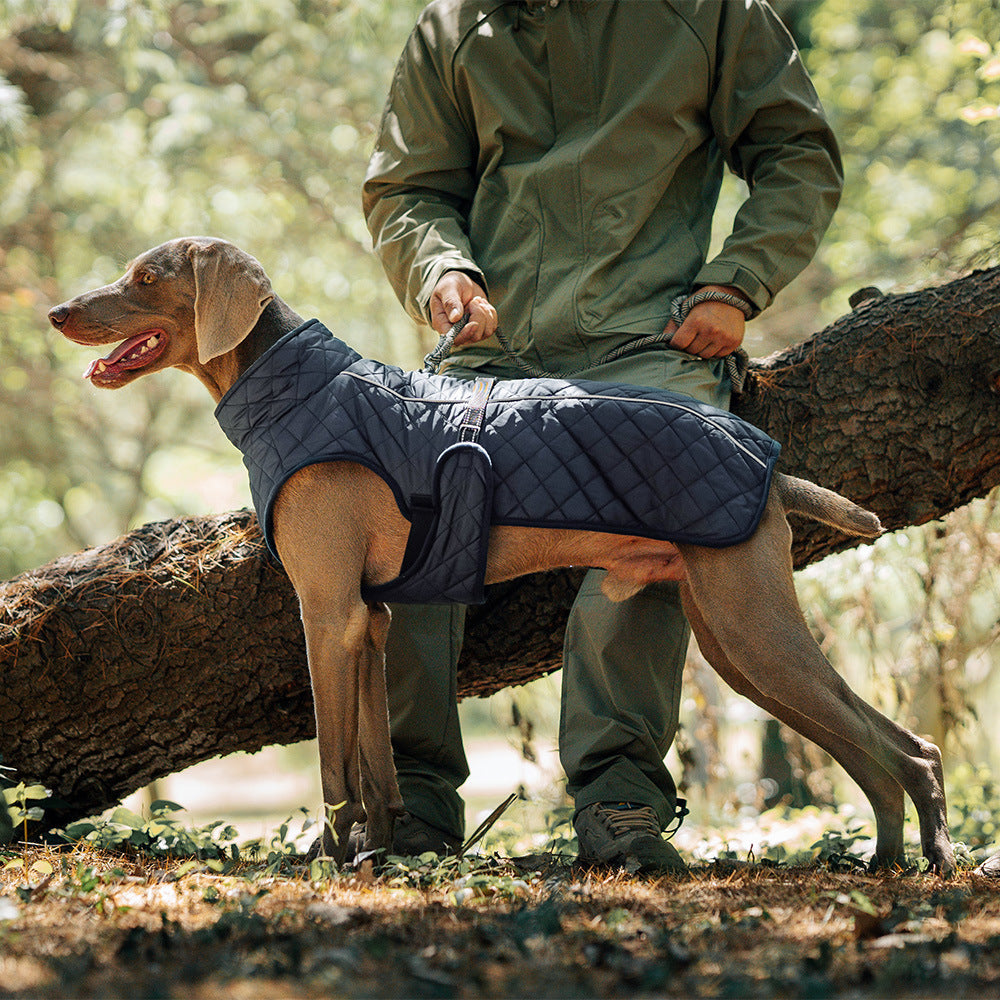
As winter transforms the landscape into a snowy wonderland, many hiking enthusiasts don't want to leave their canine companions behind. However,picture this: You're bundled up in your best thermal layers, ready to hit the frosty trail with your best furry friend. But as you step outside, you see them shiver... Is your dog dressed appropriately for this adventure?
Understanding how to properly layer your dog for cold weather is essential for any pet parent who enjoys dog hiking during the colder months. This guide will walk you through the science and practicalities of keeping your furry friend warm, dry, and happy on the trails.
Do Dogs Really Need Clothing Layers?
Many pet owners assume their dog's natural coat provides sufficient protection against the cold. While some breeds with thick double coats are well-adapted to cold weather, many dogs benefit from additional layers during winterdog hiking trips. Factors like coat thickness, body mass, age, health conditions, and acclimation to cold weather all determine your dog's need for extra protection. Small breeds, short-haired dogs, seniors, and those with health conditions typically require more insulation. Understanding your dog's specific needs is the first step in properlayering for dogs.
The Three-Layer System for Dogs
1. Base Layer: Moisture Management
The first layer should focus on moisture control. A moisture-wicking base layer for dogs helps keep their skin dry by pulling sweat away from their body.A damp dog in cold weather loses body heat rapidly, leading to discomfort and even hypothermia.Look for dog clothing specifically designed for winter hiking that is breathable and comfortable.
What to look for:
-
Material is Key: Opt for lightweight, breathable, and synthetic materials like polyester or merino wool blends. These fabrics pull moisture away from the body.
-
The Cotton Rule: Never use cotton as a base layer! It acts like a sponge, holding moisture against your dog's skin and making them cold.
-
Ideal Fit: It should fit snugly against the body without restricting movement. Look for a design that covers the core chest and belly areas, which are vulnerable to cold.

2. Middle Layer: Retaining Body Heat
The middle layer is what traps heat and provides warmth.This layer is crucial for colder conditions. Think of it as your dog's personal furnace – its primary job is to retain the natural heat their body generates, preventing it from escaping into the cold air.
Options include:
-
Fleece Jackets: A classic choice for moderate cold. Fleece is lightweight, retains heat even when damp, and is highly breathable. Perfect for active dogs.
-
Puffer warm coat: These provide superior warmth for very cold conditions or less active dogs. They often have a synthetic insulation similar to human gear.
-
Adjustability: The best approach is having a separate middle layer you can add or remove. This lets you fine-tune your dog's warmth based on the temperature and their activity level. If your dog starts panting heavily, it's time to remove a layer.

3. Outer Layer: Protection Against Wind and Snow
The outer shell is your dog's first line of defense against the elements. Its job is to block wind, repel snow and rain, while still allowing internal moisture vapor (their body heat) to escape. Without a proper shell, a wet dog can quickly become a cold dog.
Key features:
-
Waterproof & Windproof: The material must have a durable water-repellent (DWR) coating to keep your dog dry in snow and sleet.
-
Breathability: This is critical! A non-breathable shell will trap all your dog's moisture inside, making them wet from their own sweat. Look for technical fabrics designed for activity.
-
Practical Design: Features like a harness-compatible cut, reflective trim for low-light visibility, and easy-on Velcro or snap closures make a huge difference on the trail.

Don't Forget Paws and Ears! - Essential Accessories
Dogs' ears, tails, and other extremities are susceptible to frostbite due to limited blood flow in these areas. Dog booties are a game-changer for protection and traction. If your dog hates them, a good paw wax can create a solid barrier.Additionally, some dogs benefit from ear covers to keep their sensitive ears warm.
Layering your furry friend for cold weather hikes is essential to keep them warm, dry, and comfortable, especially during unpredictable winter conditions.By implementing this layering system and paying attention to your dog's specific needs, you'll ensure that winter hikes remain enjoyable and safe for both of you.
Explore howoll store winter hiking dog gear to find the perfect base layer,mid layer, and outer layer for your beloved furry friend.







